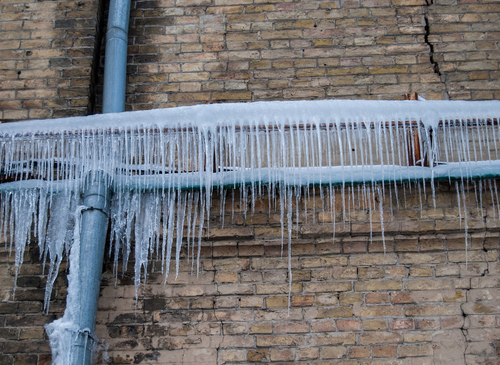How to Safeguard Pipes from Freezing: Expert Advice
How to Safeguard Pipes from Freezing: Expert Advice
Blog Article
Have you been trying to locate related information around Helpful Tips to Prevent Frozen Pipes this Winter?

Cold weather can wreak havoc on your plumbing, specifically by freezing pipelines. Right here's how to prevent it from taking place and what to do if it does.
Introduction
As temperatures decline, the danger of frozen pipelines boosts, potentially bring about expensive repairs and water damages. Understanding just how to avoid icy pipes is crucial for house owners in cold environments.
Avoidance Tips
Shielding at risk pipelines
Cover pipes in insulation sleeves or utilize warm tape to safeguard them from freezing temperatures. Focus on pipelines in unheated or outside areas of the home.
Home heating methods
Keep interior rooms sufficiently heated up, particularly areas with plumbing. Open cupboard doors to enable cozy air to flow around pipelines under sinks.
Just how to recognize frozen pipes
Look for decreased water flow from faucets, unusual odors or noises from pipes, and visible frost on revealed pipelines.
Long-Term Solutions
Architectural changes
Think about rerouting pipes away from outside wall surfaces or unheated areas. Add added insulation to attic rooms, basements, and crawl spaces.
Upgrading insulation
Buy top notch insulation for pipes, attic rooms, and wall surfaces. Proper insulation aids preserve consistent temperature levels and decreases the threat of frozen pipes.
Securing Exterior Plumbing
Garden pipes and outside taps
Disconnect and drain yard hoses before wintertime. Mount frost-proof faucets or cover outdoor faucets with insulated caps.
Comprehending Frozen Pipelines
What triggers pipelines to ice up?
Pipelines ice up when subjected to temperatures below 32 ° F (0 ° C) for prolonged durations. As water inside the pipelines freezes, it increases, taxing the pipeline walls and possibly triggering them to burst.
Threats and problems
Frozen pipes can cause water supply disruptions, building damage, and pricey repair work. Ruptured pipes can flooding homes and cause comprehensive structural damages.
Indicators of Frozen Pipes
Identifying frozen pipelines early can stop them from breaking.
What to Do If Your Pipelines Freeze
Immediate activities to take
If you think icy pipelines, maintain taps open up to alleviate pressure as the ice thaws. Make use of a hairdryer or towels taken in hot water to thaw pipes slowly.
Conclusion
Preventing icy pipelines requires aggressive actions and fast reactions. By understanding the reasons, indicators, and safety nets, property owners can protect their plumbing throughout cold weather.
6 Proven Ways to Prevent Frozen Pipes and Protect Your Home
Disconnect and Drain Garden Hoses
Before winter arrives, start by disconnecting your garden hoses and draining any remaining water. Close the shut-off valves that supply outdoor hose bibs and leave the outdoor faucet open to allow any residual water to drain. For extra protection, consider using faucet covers throughout the colder months. It’s also important to drain water from any sprinkler supply lines following the manufacturer’s directions.
Insulate Exposed Pipes
Insulating your pipes is an effective way to prevent freezing. Pipe insulation is readily available at home improvement stores and is relatively inexpensive. Pay close attention to pipes in unheated areas such as the attic, basement, crawl spaces, or garage. Apply foam insulation generously to create a buffer against the cold. You can also wrap your pipes in heat tape or thermostat-controlled heat cables for added warmth.
Seal Air Leaks
Inspect your home for any cracks or openings that could let in cold air. Seal any holes around the piping in interior or exterior walls, as well as the sill plates where your home rests on its foundation. Additionally, make sure to keep your garage door closed unless you’re entering or exiting. Leaving it open creates a significant air leak that can lead to frozen pipes.
Allow Warm Air Circulation
During cold snaps, it’s essential to allow warm air to circulate evenly throughout your home. Leave interior doors ajar to promote better airflow. Open kitchen and bathroom cabinets to help distribute heat consistently around the rooms. If you have small children or pets, be sure to remove any household chemicals or potentially harmful cleaners from open cabinets for safety.
Let Faucets Drip
A small trickle of water can make a big difference in preventing ice formation inside your pipes. When temperatures drop significantly, start a drip of water from all faucets served by exposed pipes. This continuous flow helps prevent the water from freezing. Additionally, running a few faucets slightly can relieve pressure inside the pipes, reducing the chances of a rupture if the water inside does freeze.
https://choateshvac.com/6-proven-ways-to-prevent-frozen-pipes-and-protect-your-home/

I came across that review on Prevent Frozen Pipes when surfing the search engines. Are you aware of anybody else who is excited about the topic? Please feel free to promote it. Thank you so much for going through it.
Book Service Now Report this page